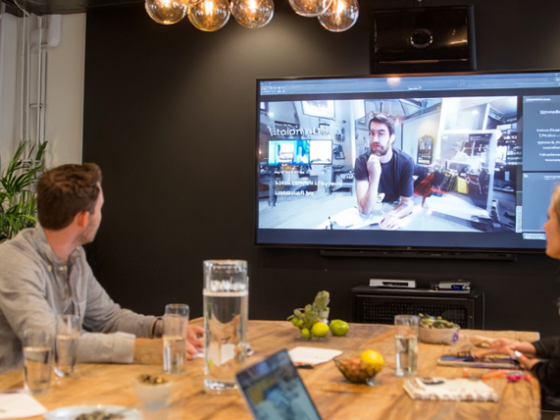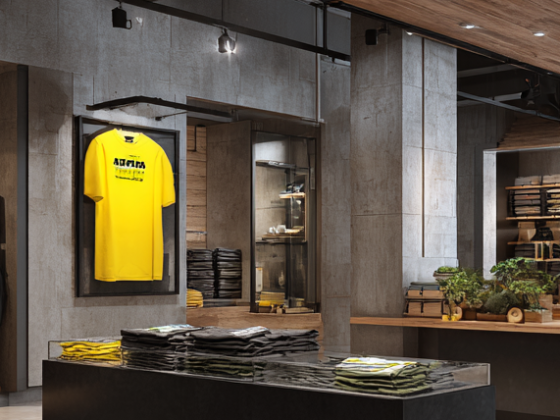share this article
Some of you might remember the infomercial era—those late-night product pitches that caught sleepless viewers at their most vulnerable, selling everything from kitchen gadgets to miracle cures. Fast forward to today, and the concept of shoppable content has taken that idea and given it a digital-age makeover. Instead of drawn-out monologues, you now have instant, interactive shopping at your fingertips on platforms like Instagram, TikTok, and YouTube. With just a click or a swipe, you can buy what catches your eye in a seamless blend of entertainment and commerce. Whether it’s a livestream shopping event or a shoppable video from your favorite influencer, today’s shopping experience is all about engaging audiences in real-time, on their own terms.
For consumers, it’s all about convenience and immediacy; for brands, it’s an opportunity to engage audiences in more personalized and creative ways. Shoppable content is revolutionizing the retail landscape, making shopping more immersive, interactive, and enjoyable than ever before.
Why Shoppable Content?
More than a driver of immediate sales, shoppable content plays a crucial role in fostering long-term brand loyalty for businesses. By making products instantly accessible at the point of inspiration, your customers are more engaged and satisfied. That builds a deeper connection between brands and their audiences.
This strategy fits perfectly within a broader omnichannel approach, where digital transformation and customer experience management are keys to staying competitive. Shoppable content stands out as a pivotal element in creating a cohesive and personalized shopping journey. The goal is to ensure that every interaction with the customer is an opportunity to reinforce brand affinity and drive future sales.

The Competitive Advantage
By integrating shoppable elements into social media posts, videos, and even live streams, brands capture attention and convert engagement into sales in real time.
Beauty brand Sephora has successfully integrated shoppable Instagram posts into its marketing strategy, allowing users to purchase products directly from their feed. It’s an example of mastering social commerce to increase conversion rates and build stronger customer loyalty.
It’s worked. Digital storefronts have allowed Sephora’s 20 million social media followers to browse and buy products directly in the Instagram app. In August 2024, Instagram users in the United States spent an average of 33.1 minutes per day using the app. This half hour offers a prime opportunity for brands like Sephora to catch potential customers, as each minute spent on the app increases the likelihood of turning casual browsing into purchasing decisions.
This strategy was heavily influenced by the success of Sephora China’s partners, who served as a roadmap for enhancing the consumer experience in U.S. stores, according to Carolyn Bojanowski, Sephora’s general manager of e-commerce, in a Quartz news article. China’s social-commerce market exceeds $300 billion in annual sales.
L’Oréal introduced livestream shopping into its marketing strategy and quickly found success. The cosmetics company offers livestream makeup tutorials on YouTube and Instagram. Customers can meet with senior makeup and skincare experts who advise them on how to create popular looks using L’Oréal products.
During the livestream, the company creates excitement with calls to action like “click link for a 20% discount.” L’Oréal has held more than 50 livestream shopping experiences across five countries. At the same time, the company has seen a 150% increase in virtual try-ons through augmented reality (AR) immersion.

AI and Shoppable Content
As the digital shopping landscape evolves, shoppable content continues to grow, with sales through social platforms projected to reach $82 billion in the United States by 2026.
Artificial intelligence is a major driver of this growth, enhancing the consumer experience through innovations like AI-powered shopping ads, virtual try-ons, and 3D product views. These technologies not only boost engagement and click-through rates but also provide a more personalized and immersive shopping journey, making it easier for consumers to interact with and purchase products directly within content.
Live shopping events are also gaining traction, where brands host live streams featuring product demonstrations, exclusive deals, and direct links to purchase items in real-time. These events are often powered by AI to optimize timing, content, and audience targeting, ensuring that the right products are showcased to the right customers.
AI algorithms also collect and process data from livestreams. This data often includes viewer comments, reactions and even purchasing patterns. Creating a personalized shopping experience then becomes easier and allows businesses to improve their customers’ overall satisfaction.
AI can even provide real-time language translation, allowing businesses to expand their markets, as well as enhance livestream shopping through image recognition capabilities.
Determining the ROI of Shoppable Content
- Sales Conversion Rates: One of the most direct indicators of ROI is the sales conversion rate, which measures the percentage of users who make a purchase after interacting with shoppable content. By tracking how many clicks on shoppable links result in actual sales, brands can gauge the immediate financial impact of their content.
- Customer Lifetime Value (CLV): Beyond immediate sales, it’s important to consider the long-term value of customers acquired through shoppable content. CLV helps brands understand how much revenue a customer will generate over their entire relationship with the brand. If shoppable content consistently attracts high-CLV customers, its ROI is likely higher than campaigns that only drive one-time purchases.
- Engagement Metrics: ROI isn’t just about direct sales. Engagement metrics such as click-through rates (CTR), time spent on content, and social shares can also provide insight into how well shoppable content resonates with the audience. High engagement often leads to stronger brand loyalty, which can translate into long-term financial returns.
- Attribution Modeling: To get a comprehensive view of shoppable content’s ROI, brands should use attribution modeling. This method tracks how different touchpoints—such as social media posts, email campaigns, or product pages—contribute to a sale. By understanding the role that shoppable content plays in the overall customer journey, brands can more accurately allocate credit and resources.
- A/B Testing: Conducting A/B tests allows brands to compare different versions of shoppable content to see which performs better. By experimenting with various elements—such as product placement, call-to-action buttons, or content format—brands can identify what drives the highest ROI and refine their strategies accordingly.
By leveraging these metrics and analytical tools, brands can determine a more accurate ROI of their shoppable content, allowing them to make data-driven decisions that enhance their marketing effectiveness and drive sustained growth.

Brands Getting It Right
Away is a travel brand that leverages social media and user generated content to reach consumers and not just sell products but build their brand around a cult of personality that truly engages, entertains, and attracts consumers.
ASOS leverages both shoppable content on Instagram and Snapchat, as well as user-generated content and encourages consumers to post their own photos with the hashtag #AsSeenOnMe.
With nearly 40 million followers on Instagram, H&M has transformed their Instagram page into a shoppable platform by tagging items and providing convenient purchase links.
Net-a-Porter is considered one of the most successful social commerce shopping successes. They give users insight and entertainment through well-written articles that contain links to products, like this interview with Gracie Abrams that includes photos with get-the-look links.
The Shoppable Content Outlook
The future of shoppable content is promising, with projections indicating that social commerce sales could reach $1.2 trillion globally by 2025. As consumers increasingly prefer to discover and purchase products directly through social media, retailers have a significant opportunity to meet their customers where they are, particularly as Gen Z leads this shift. However, success in shoppable content requires careful execution—common mistakes such as poor user experience, broken links, low-quality visuals, and ineffective influencer partnerships can deter potential buyers. To fully capitalize on this trend, retailers must prioritize seamless integration and continuously optimize their content strategies.




